How to Choose Microwave Safe Utensils: Materials and Tips
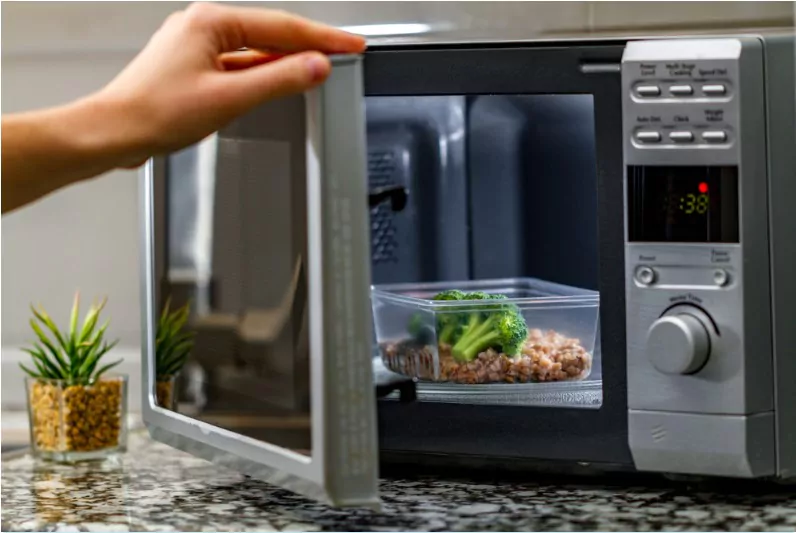
Ovens and microwaves are indispensable appliances in home cooking, changing the way we prepare food. However, the efficiency and safety of these cooking devices depend largely on the use of the correct equipment. Choosing the right microwave-safe utensils and OTG-safe utensils isn’t just a simple matter—it’s key to ensuring our cooking methods are efficient and safe.
When it comes to microwave cooking, using utensils for microwave oven that are specifically designed for this purpose is crucial. These microwave safe utensils sets are designed to withstand the unique cooking conditions of the microwave, which uses microwave air to heat food The importance of choosing microwave safe utensils cannot be overstated, because health hazards such as chemical leakage due to abnormalities, or physical hazards such as melting fires may occur.
Similarly, the need for OTG-safe utensils is equally important in conventional ovens, especially OTG (Oven, Toaster, and Grill). These tubes ensure even heat distribution and efficient cooking without damaging the product or equipment. For example, while metal pans can also serve as hot transport for bread and fries, not all metals are suitable for an OTG environment. Understanding which utensils can be used in microwave and OTG is important, as products that are suitable for one may not be suitable for the other.
1 Understanding Oven-Safe and Microwave-Safe Materials
Navigating the sector of kitchen utensils may be hard, especially when considering the specific necessities for ovens and microwaves. Understanding which materials are appropriate for these home appliances is key to cooking achievement and appliance durability.
Metal Utensils (OTG Safe Utensils)
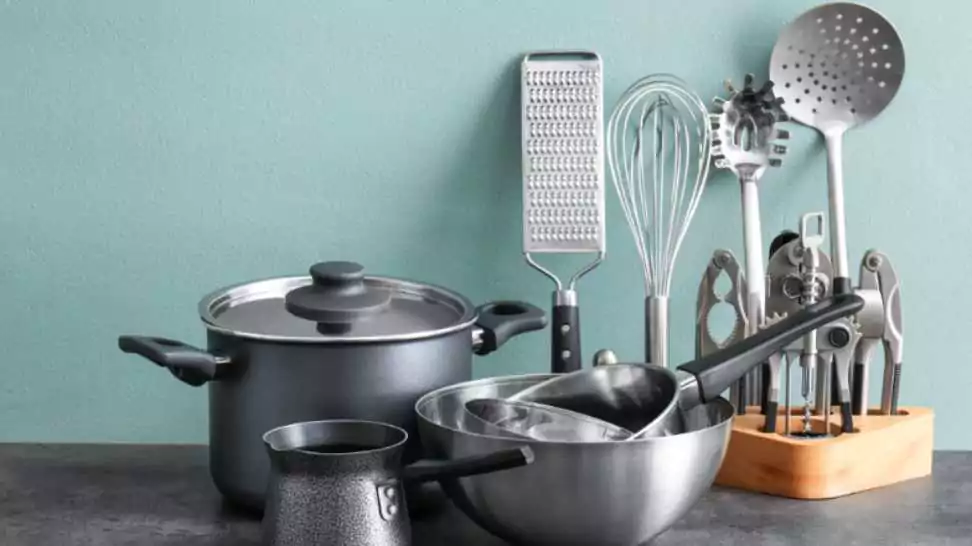
Metal utensils, crafted from materials like stainless steel and aluminium, are fantastic to be used in ovens, especially OTGs (Oven, Toaster, Grills). Their potential to face up to excessive temperatures and promote even cooking makes them suitable as OTG-safe utensils. However, it’s miles essential to avoid using these metal utensils in microwaves, where they can cause sparks and damage the appliance.
Glass Utensils (Microwave Oven Utensils Set)
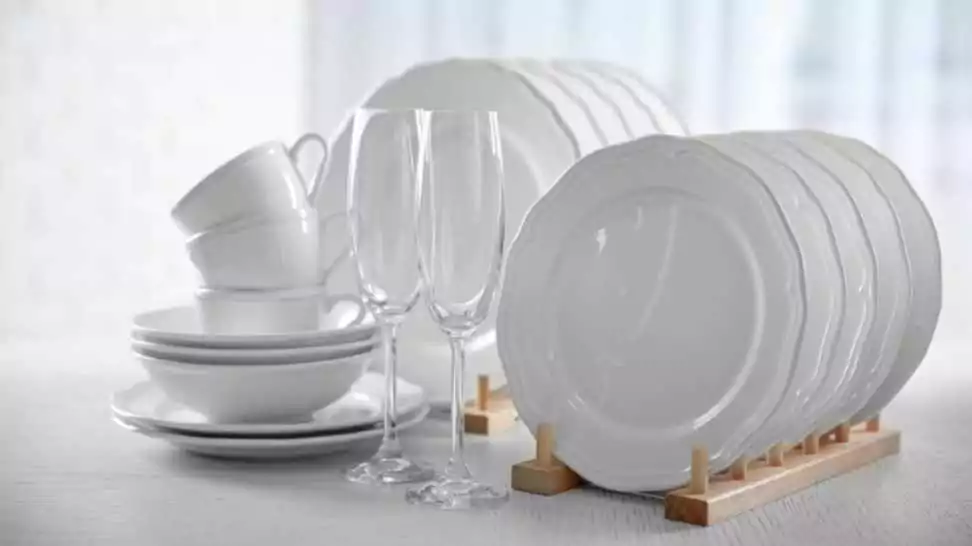
Borosilicate glass utensils are an essential part of any microwave oven utensils set due to their durability and thermal shock resistance. This sort of glass can accurately transition from a chilly refrigerator to a warm oven or microwave without cracking, making it perfect for plenty of cooking and reheating tasks in both ovens and microwaves.
Ceramic and Stoneware (Utensils for Microwave Oven)
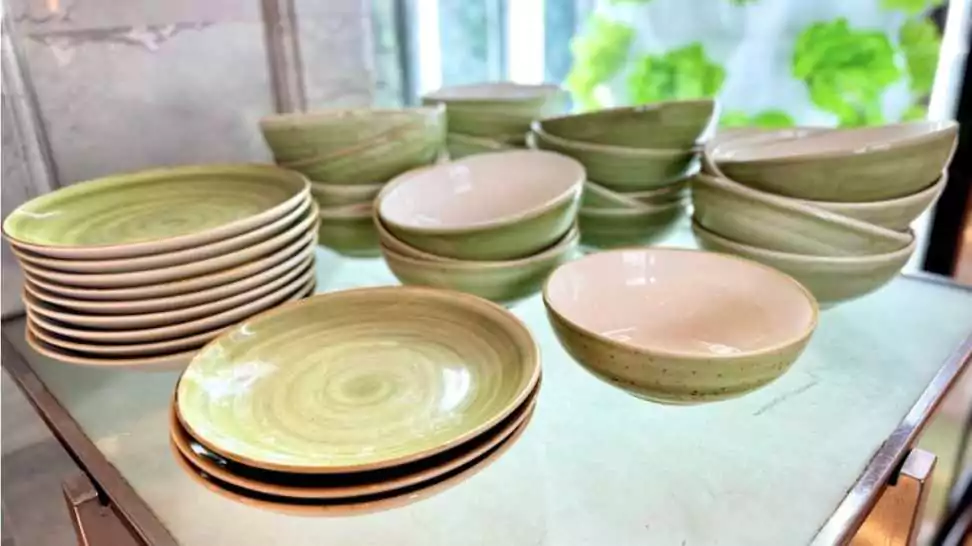
Ceramic and stoneware are excellent for both oven and microwave use. When labelled as microwave-safe ceramic utensils, these materials can safely handle high heat without leaching chemicals or flavours into your food. Their heat retention qualities make them perfect utensils for microwave oven and traditional ovens, ideal for dishes requiring steady, prolonged heat.
Silicone Bakeware (Which Utensils Can Be Used in Microwave)
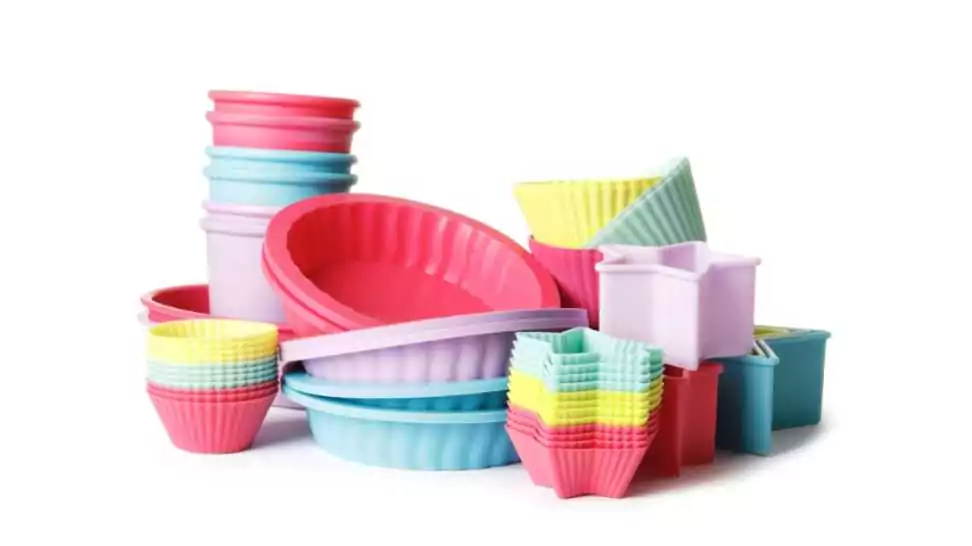
Silicone bakeware is celebrated for its versatility and safety in both ovens and microwaves. As a material that answers the question of which utensils can be used in microwave, silicone withstands a wide range of temperatures, making it ideal for everything from baking cakes to reheating leftovers. Its non-stick properties and easy-to-clean surface add to its convenience and suitability for frequent use.
2 Types of Oven-Safe and Microwave-Safe Utensils
Choosing the right utensils for your oven and microwave not only makes your cookware safer and last longer, but it also affects the way you cook. Here we examine which types of utensils are suitable for these purposes.
Baking Pans & Trays (OTG Safe Utensils)
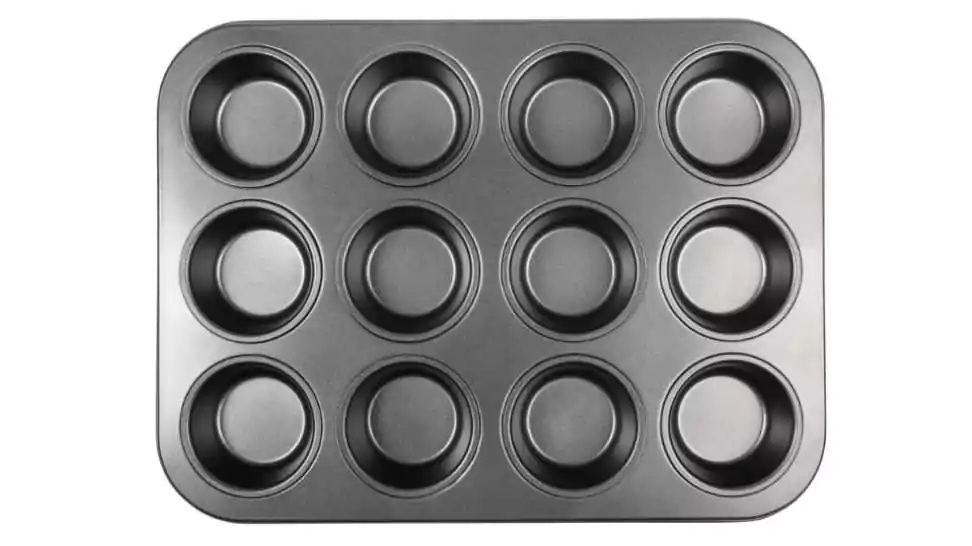
When it comes to cooking in the oven or microwave, choice of materials is important. OTG-safe utensils such as aluminum and heavy steel baking pans and trays are perfect for conventional ovens due to their excellent thermal properties. Look for heat-resistant silicone or plastic trays that are labelled as microwave-safe for microwave use. These materials are specially designed to handle the microwave’s unique heating system, ensuring that your baked goods cook evenly and safely.
Casserole Dishes and Roasting Pans (Utensils used in microwave ovens)
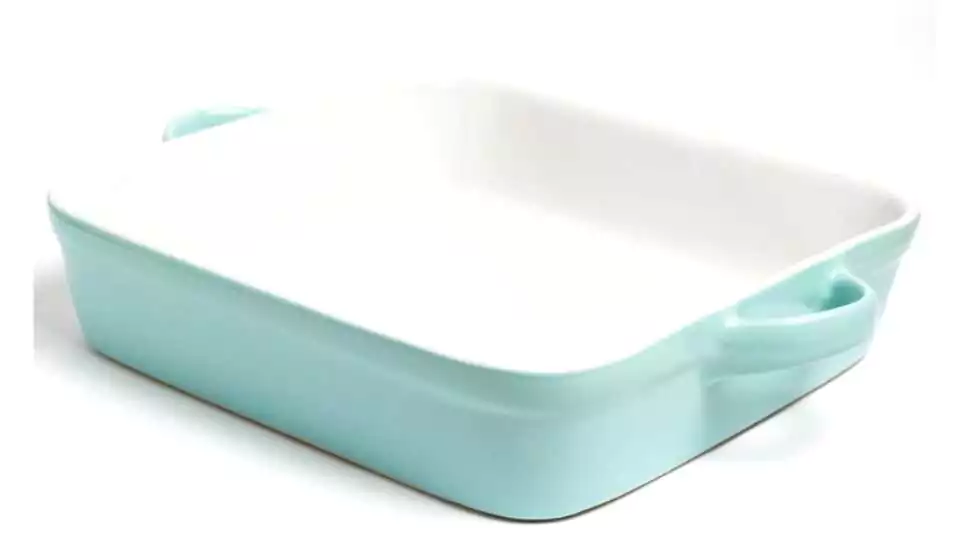
Casserole dishes and roasting pans are versatile utensils used in microwave ovens and traditional ovens. Look for materials like ceramic, high-heat-resistant glass, and silicone, all of which are safe and effective. These utensils will provide a very stable temperature for slow cooking and cooking, delivering consistent culinary results whether you are preparing a savoury casserole or a Sunday roast.
Oven-Safe Pots and Dutch Ovens (What Utensils Can Be Used in Microwave)
Oven-safe pots and Dutch ovens answer the question of what utensils can be used in microwave when made from materials like enamelled cast iron or microwave-safe ceramics. These are ideal for dishes that require long, slow cooking times or high-heat baking. Their heavy bases and thick walls allow for even heat distribution, making them indispensable for both braising meats and baking bread in either appliance.
Specialty Items (Microwave Oven Utensils Set)
Including special items in your microwave oven utensils set can greatly enhance your cooking options. Items such as pizza stones, which can also be used in conventional ovens, and oven-safe cooling racks are excellent examples. These items are designed to withstand high temperatures and provide a specialised cooking surface that mimics traditional cooking methods, allowing for the preparation of specialized dishes like crispy pizzas or perfectly cooled cookies.
3 How to Choose and Care for Your Oven and Microwave Utensils
Choosing the right utensils for your oven and microwave is important, not only for efficient cooking but also to ensure the longevity and safety of your cookware. This section provides insight into choosing the right utensils and maintaining them to ensure safe use and safety in the kitchen.
Choosing the Right Utensils (Microwave Safe Utensils)
Choosing the right utensils, especially microwave-safe utensils, considers several factors to ensure compatibility with microwave and oven applications. The material itself is the most important consideration; For example, glass, ceramic, silicone, and some plastics tend to be safe for the microwave, while metal is a go-to for the oven but not the microwave Again, check for labels like microwave-safe or oven-safe to avoid any speculation.
The design of the utensil also matters. Features like lids, handles, and the overall shape can affect how the utensil performs in an oven or microwave. For example, round dishes are preferred in microwaves for even cooking, while square or rectangular shapes work best in ovens for optimal space utilization and even heating.
Care and Maintenance Tips (Utensils for Microwave Oven)
Proper care and maintenance of utensils for microwave oven and conventional ovens can significantly extend their lifespan and maintain their performance. Always follow manufacturer guidelines for cleaning and maintenance. For most materials, mild soap and warm water are sufficient, but avoid abrasive cleaners or pads that might scratch or damage surfaces.
For glass and ceramic utensils, sudden temperature changes should be avoided to prevent cracking. Allow dishes to come to room temperature before washing or reheating. Silicone utensils, while durable, should be checked regularly for signs of wear and tear, such as cracks or brittleness, which could compromise their structural integrity.
Safety Tips (OTG Safe Utensils)
Safety should always be a priority when using OTG-safe utensils in the oven and microwave. Always use oven mitts when handling hot utensils to prevent burns. Ensure that none of the metal utensils used in the OTG have plastic parts that can be melted or damaged at high temperatures. In addition, if you are using glass or ceramic in the oven, make sure it is specifically labelled as oven-safe so that it can withstand high temperatures.
Be cautious of the condition of your utensils. Avoid cracked or damaged utensils from high-heat use to prevent accidents or further damage. Also, make sure the size and shape of the container are appropriate for your oven or microwave to prevent overcrowding and proper air circulation, which is important for safety and efficient cooking.
4 Wrapping Up
Choosing the right microwave oven utensils set and OTG-safe utensils is essential for cooking success. These utensils not only improve the quality and safety of your cooking but also protect your appliances. Whether you’re cooking, baking, or reheating, using the right utensils can dramatically improve your cooking results.
Take some time to check your kitchenware. Make sure every item is compatible with your appliances and your kitchen tasks are up to the mark. Upgrading or verifying your utensils isn’t just about spending money; it’s about investing in the efficiency and safety of your kitchen.
Equip yourself with the best utensils to elevate every dish to ensure a delightful cooking experience every time.
FAQ's about Microwave Safe Utensils
What utensils can be used in microwave?
For microwave cooking, you can use utensils made from materials such as glass, ceramic, plastic, and silicone that are specifically labeled as microwave-safe. Avoid using metal, aluminum foil, or any utensils with metallic trims as they can cause sparks or fire in the microwave. Always check the manufacturer’s guidelines to ensure safety and compatibility with microwave use.
What are the safest materials for microwave?
The safest materials for use in a microwave are glass, ceramic, and microwave-safe plastics and silicones. Always look for a label or marking that indicates an item is microwave-safe. Glass and ceramic are generally the best choices as they do not leach chemicals into food and are highly heat-resistant. Microwave-safe plastics should be free from BPA and phthalates to minimize health risks. Silicone is also a good option due to its heat resistance and durability. Always avoid using metals or non-microwave-safe materials, as these can cause sparks or fires.
Is stainless steel safe in microwave?
No, stainless steel is not safe to use in a microwave. Metal, including stainless steel, can reflect microwaves, which can cause sparks, fires, or damage the microwave oven. It’s best to use materials specifically labeled as microwave-safe, such as glass, ceramic, or microwave-safe plastics.
Can I put glass in microwave?
Yes, you can put glass in the microwave as long as it is labeled microwave-safe. Most glass containers are suitable for microwave use, but it’s important to avoid using glass that is not specifically designed for microwave use, such as glass with metallic paint or decoration. Always check for a microwave-safe label or symbol to ensure safety.
What plastic code is microwave safe?
Plastic containers labeled with recycling codes #1, #2, #4, and #5 are generally considered safe for microwave use. Here’s a quick breakdown:
#1 PETE (Polyethylene Terephthalate): Typically safe for single use. Repeated use can degrade the plastic, potentially leaching chemicals into food.
#2 HDPE (High-Density Polyethylene): Often considered safe for use in microwaves, especially in containers designed for food storage.
#4 LDPE (Low-Density Polyethylene): Less commonly used for microwave containers, but generally safe if labeled as microwave-safe.
#5 PP (Polypropylene): Very commonly used for microwave-safe containers and considered one of the safest plastics for microwave use.
What is the safety risk of microwave?
Microwaves are generally safe appliances, but improper use can present several safety risks. The most common issue is burns, which can occur from handling hot containers or being exposed to steam from heated foods. Additionally, microwaves can pose fire hazards if materials that are not microwave-safe, such as metals or certain plastics, are used inside them. Another risk involves the leaching of chemicals into food, which can happen when non-microwave-safe plastic containers are heated. Uneven heating is another concern, as it can lead to cold spots in food where bacteria may survive, making thorough heating especially important for meats and poultry. Although less common today, older pacemakers might be susceptible to interference from microwave radiation; however, modern pacemakers are typically shielded against such effects. To ensure safety, always use containers marked as microwave-safe, follow the microwave’s operating instructions, and regularly inspect the appliance for damage or wear.
Community Q&A
About This Article
This article has been viewed 1280 times.



